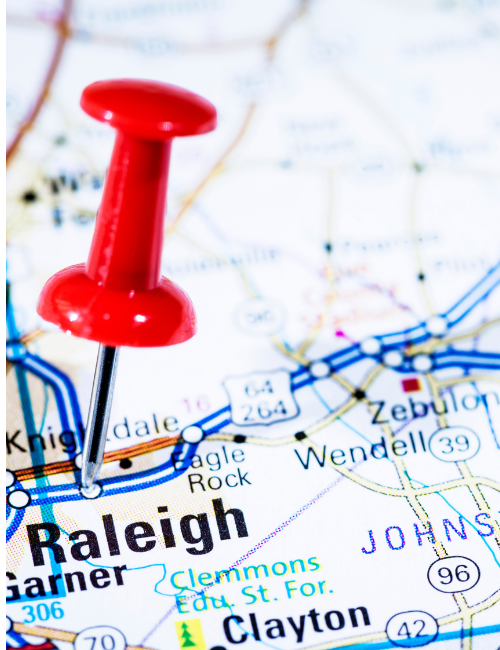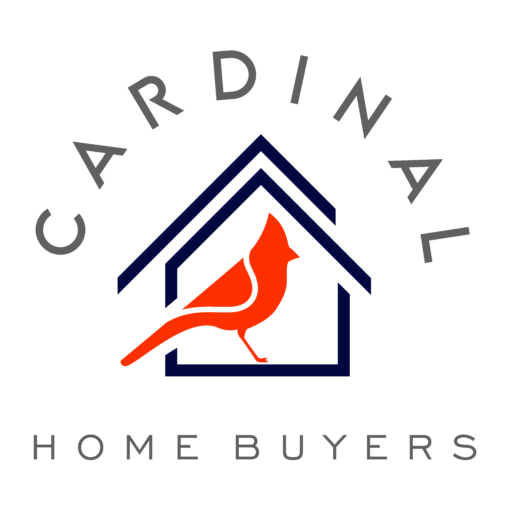
In addition to being one of the cities in the United States that is expanding at the quickest rate, Raleigh, North Carolina, is a desirable place to live because it combines the allure of the South with the conveniences of the modern world. However, it is necessary for both newcomers and long-term residents of Raleigh to have a solid awareness of the cost of living in the city. Investigating the many costs associated with living in this dynamic city, which include housing and transportation, as well as groceries and medical care, can assist you in making well-informed decisions on your finances. Whether you are interested in purchasing a home or are simply curious about the economy of the area, this guide will offer you with vital insights into the elements that contribute to the cost of living in Raleigh to consider.
Overview of Raleigh’s Living

Raleigh, North Carolina, is a busy city known for its growing tech industry, colleges and universities, and southern charm. As more people think about moving to Raleigh, it’s important to know how much it costs to live there. Raleigh’s living index is higher than the national average. This is because of higher costs for things like housing, food, healthcare, and electricity. This guide will look at the many things that affect these costs and compare them to nearby cities. This will give people who are thinking about moving to this thriving area useful information to help them make an informed choice.
Factors Influencing Living Costs in Raleigh
The costs that people in Raleigh, North Carolina have to pay are affected by a number of important things. The Raleigh living score is mostly affected by the housing market. As the city continues to grow, more people are looking for homes like single-family homes and flats. This has caused prices to rise above the national average. The biggest expense for most people in Raleigh these days is usually their property, and the rise in prices affects both the purchase price and the rental rates. Also, a big part of the cost of living in Raleigh is the cost of electricity. The normal cost of utilities like gas, water, and electricity is a big part of how much a family spends each month. These energy costs are pretty close to the national average, but they change depending on how much you use and the time of year in North Carolina.
The cost of living in Raleigh is also affected by how people get around. Average transportation costs might include things like keeping your car in good shape, taking the bus or train, and buying gas. Even though the city has a good public transportation system, many people choose to drive their own cars, which adds to their monthly costs of living because they have to pay for insurance, repairs, and gas. When looking at healthcare costs, Raleigh’s fees are a little higher than the national average. This is because the medical services in Raleigh are very good. This includes visits to the doctor, prescriptions, and health insurance premiums, all of which are important parts of Raleigh’s total living index.
Moreover, daily expenses such as food and entertainment are pivotal in the cost equation. Grocery and dining costs can align with or surpass national averages, depending on the proximity to urban centers and local demand. Raleigh offers a unique blend of Southern culinary delights and international cuisines, sometimes at a premium price, enhancing the cultural yet costly experience of living here. Therefore, whether for long-time residents or newcomers, understanding these various elements helps in budgeting efficiently and adjusting to the economic dynamics of life in Raleigh, North Carolina. Such insights aid those looking to move to Raleigh, ensuring they make informed financial decisions aligned with their lifestyle expectations.
Comparing Raleigh’s cities
When evaluating the cost of living, a comparison with nearby cities provides a richer perspective on Raleigh’s standing. Raleigh’s national averages, but weighing these costs against similar urban areas in North Carolina is still essential. For instance, cities like Durham and Chapel Hill, part of the Research Triangle, offer slightly varied expense levels. If you’re considering selling property nearby, cash home buyers in Durham can provide fast offers and flexible options suited to your needs.Comparing these living costs helps highlight Raleigh’s challenges. For instance, while housing costs in Raleigh may be higher than in some neighboring towns, they remain competitive compared to major metropolises nationwide, offering good value for money given the economic opportunities. Additionally, transportation costs in Raleigh might be more favorable than those in bustling Charlotte, North Carolina’s largest city.
The effects on money go beyond homes and transportation. The average cost of groceries and food may be the same as the average cost of food and entertainment in cities across the state, but Raleigh’s entertainment and culture options can cost more. This wide range of lifestyle options is both a luxury and a financial benefit. It makes Raleigh stand out as a busy but easy-to-reach hub for families, workers, and students. This difference is often shown when people are thinking about moving, where cost-effectiveness and quality of life play a big role in choices.
Average utilities are another factor. When you compare Raleigh to its neighbors, these utilities are often fairly balanced. Even though Raleigh has a higher total cost index, its utilities are more in line with the state’s age, though extreme weather can sometimes throw this balance off. These facts are very helpful for people who are thinking about moving to the area because they show that Raleigh is an economically competitive city even though it has a high cost of living. Looking at these similarities can help you understand how Raleigh’s social scene works, which can help people who are thinking about moving or already live there make better financial decisions and changes to their lifestyles.
Expense CategoryImpactComparisonKey InsightHousingRaleigh’s costs are slightly above the national average and significantly higher than those of its regional peers.Raleigh’s costs are slightly above the national average and significantly higher than its regional peers.Housing is the primary driver of increased living expenses in Raleigh.TransportationSignificant cost factor owing to reliance on cars and public transit.The cost of transportation is comparable to the national average and slightly lower than that of regional cities.Public transit improvements could mitigate personal transportation costs.UtilitiesModerate impact on monthly expenses, stable rates.The utility rates are aligned with the national average and are lower than those in some nearby cities.Stable utility costs provide predictability in monthly budgeting.GroceriesRegular impact, affected by economic fluctuations.Similar to the national average, marginally higher than local alternatives.Continued growth of local markets may stabilize grocery costs.
The table that follows provides clarity on Raleigh’s economic markers in comparison to those of adjacent metropolitan areas and national norms. It also summarizes the various living standards that Raleigh presents.
Housing Costs in Raleigh
Understanding the housing costs in Raleigh is crucial for anyone considering a move to this vibrant North Carolina city. With a changing market influenced by various economic factors, the average cost of living here can often surpass the national average. This section provides insight into current trends affecting Raleigh’s housing market and offers practical tips for home sellers in the area. Whether you’re renting or selling, navigating the real estate landscape in Raleigh requires knowledge of market dynamics and strategic decision-making. For homeowners looking for a quick and hassle-free sale, we buy houses in Raleigh and can help streamline the selling process.
Trends in the Raleigh Housing Market
Raleigh, North Carolina’s housing market is changing, reflecting national trends and unique local peculiarities. Raleigh is one of the state’s fastest-growing cities, and its housing market has changed significantly due to economic growth and population growth. Demand for rental and buy options affects Raleigh’s average housing cost. Raleigh’s typical rent for apartments and traditional homes often exceeds the national average, although it’s still competitive with other large cities. The local economy and Raleigh’s educational institutions, which attract families and professionals and enhance demand and property prices, are the main drivers.
As the city expands, so does the diversity of its housing stock. Developers are increasingly responding to this demand with a mix of high-rise apartments and sprawling suburbs, providing a range of choices for varying budgets. The average housing prices reflect this development, with newer constructions popping up, blending modern amenities with southern charm. However, the cost implications don’t apply to buying; rental markets exhibit similar pressure. Rent for apartments in Raleigh can vary widely based on location; downtown areas command a premium, while suburban and less central neighborhoods might present more affordable alternatives. This information is crucial for newcomers aiming to balance proximity to work and lifestyle preferences against cost constraints.
Current housing market trends favor sustainable and smart homes, coinciding with worldwide real estate movements promoting environmental sustainability and technological integration. These developing trends target environmentally concerned consumers and raise initial expenses due to improved construction methods. Over months, real estate market competitiveness and Raleigh’s expanding popularity as a premier living location might affect average cost discrepancies. Buying, renting, or selling in Raleigh’s housing market requires staying current on these developments.
Tips for Home Sellers in Raleigh
For those looking to sell their homes in Raleigh, understanding the local market dynamics can significantly impact how quickly and profitably a transaction is completed. Raleigh’s set is unique in North Carolina and handily competitive. It should start by analyzing the current market trends and average housing prices to set a competitive, realistic price point. Highlighting property features that align with buyer trends, such as energy efficiency, smart home technologies, or updated amenities, can make a listing more attractive. Given that the average rent in Raleigh can be pretty competitive, showcasing properties as viable investment opportunities can also appeal to prospective buyer-landlords.
Marketing is a potent tool in the modern real estate landscape. Utilizing online platforms to target potential buyers, both local and out-of-state, broadens exposure. Professional staging can transform a property, accentuating its best features and inspiring a stronger emotional connection with potential buyers. It’s prudent to research comparable home sales in Raleigh and the surrounding areas to better understand price-setting and negotiation strategies. Better comparison helps in evaluating minor renovations, which could yield a significant return relative to current housing costs.
In addition to knowing how to price and market your home, knowing the rules about when and how to disclose property in Raleigh, North Carolina can help you sell your home faster. Working with a Raleigh-area real estate agent who knows the area well can give you useful advice and help, making the process of selling go more smoothly. If you’re considering selling directly, you can also learn more about how Cardinal Home Buyers works to simplify the home-selling process. Additionally, because the cost of living in Raleigh is higher than the national average, marketing homes as affordable while taking into account possible rent situations in Raleigh could bring in buyers on a budget. Additionally, because the cost of living in Raleigh is higher than the national average, marketing homes as affordable while taking into account possible rent situations in Raleigh could bring in buyers on a budget. To successfully sell a home in Raleigh’s housing market, you need to be well-informed, flexible, and smart.
Understanding Utility Costs in Raleigh

Utility costs are a significant component of the living expenses in Raleigh, North Carolina. Understanding these costs is vital for residents who manage their monthly budgets effectively. With electricity, water, gas, and internet services contributing to household bills, these expenses often reflect the national usage average and seasonal changes. As the city grows and evolves, so do the challenges of aging, and the report explores owners’ familiarity and strategies to reduce these bills, offering helpful recommendations for a more cost-effective living experience in Raleigh.
Common Utility Expenses for Homeowners
Raleigh, North Carolina residents must monitor their utility expenses to stay inside budget. Most people’s monthly utility bills are dominated by power. This is especially true in summer and winter, when air conditioning and heating are needed. Power rates generally around the national average, however they can vary substantially depending on house size, equipment efficiency, and homeowner behaviors.
Water and sewer services constitute a substantial portion of utility expenditures. The cost of water services in Raleigh remains competitively aligned with the average cost in North Carolina. Nonetheless, variables such as home size and lifestyle preferences, like the presence of a swimming pool or an expansive garden, might elevate consumption, resulting in increased expenses. Gas services in Raleigh, primarily utilized for heating and cooking, reflect the national average utility expenses. Consumption patterns can influence the ultimate monthly expenditure.
Internet and cable services are other essential factors. Given Aleigh’s expanding economy and increasing population of remote workers, reliable and resilient internet connections are essential. Although several providers have competitive packages accommodating diverse budgets, the average cost may vary depending on the speed and supplementary services offered. The total of these average utility prices can be substantial; nonetheless, comprehending them enables homeowners to implement essential management and reduction strategies.
Strategies to Reduce Utility Bills
Reducing utility bills in Raleigh requires strategic action and consistent effort. One practical approach is improving energy efficiency within the home. Homeowners can start by investing in energy-efficient appliances that consume less power, such as LED lighting and ENERGY STAR-rated devices. Installing smart home technologies can also help. Smart thermostats, for instance, allow homeowners to optimize heating and cooling systems, potentially lowering utility bills by adapting usage to when it’s needed.
Another method is enhancing insulation in older homes, which can prevent energy loss and keep heating or cooling more effective and efficient. Together with sealing leaks around windows and doors, these steps help maintain the desired indoor temperature without unnecessary energy expenditure, aligning with average utility trends in Raleigh. What are the other crucial techniques? Installing low-flow fixtures or fixing leakage issues swiftly can significantly reduce water consumption, thus lowering the overall cost of living.
Reviewing current packages and negotiating for better deals can result in immediate savings for those utilizing internet services. Some roamers offer bundled services, which could be an economical alternative for families needing both a band and a service. On the cumulative cost of utilities, encouraging simple habits like turning off lights when not in use or unplugging electronics can have a substantive impact over time.
To reduce utility expenses in the long run, consider participating in local initiatives or exploring renewable energy options such as solar panels. Despite the potentially hefty initial investment, these systems can gradually reduce Raleigh residents’ reliance on conventional energy sources. This can reduce their average utility expenses and enhance environmental sustainability in that location. While you focus on making smart financial and eco-friendly choices at home, take time to enjoy what the city offers and discover 40 free things to do in Raleigh, NC. By prioritizing innovative concepts, homeowners can achieve financial savings while simultaneously benefiting the environment.
Commuting and Transportation in North Carolina

Understanding transportation in North Carolina, especially in Raleigh, is vital for grasping the overall cost of living. Each plays a significant role, from public transit infrastructure to the implications of personal car ownership. Residents of Raleigh often weigh the average cost of commuting against the national average and local economic conditions. Delve into the myriad of public transportation options available and analyze the costs associated with owning and maintaining a car, giving a comprehensive look at how transport choices impact daily living expenses.
Public Transportation Options in Raleigh
Many people in Raleigh, North Carolina, depend on the public transportation system to keep up with their costs of living while also being able to get around easily. There are buses, shuttles, and park-and-ride options in the county that make commuting cheaper on average. The choices encourage a way to commute that is better for the environment and costs a lot less than driving to work. Rail’s service, which is run by GoRaleigh, covers a lot of ground in the city, including both busy places and residential areas. This service focuses on being on time and being affordable. It is flexible enough to meet the needs of different commuters, which makes it a good choice for seniors, workers, and students. The prices are very close to the national average, which keeps them affordable for low-income travelers. As a way to improve the commuter experience, GoRaleigh offers smart cards and mobile payment choices. This episode went toward integrating technology, which would make fare transactions easier and encourage people to use more often. Along with the Greater Triangle Commuter Rail Project, the city also wants to improve public transportation. This will help reduce traffic and make journey times faster. People who feel this way are likely to use public transportation more and lower their usual transportation costs, which will further balance the scales between individual car use and public transit use.Raleigh’s plans for sustainable growth include adding more bike lanes and pedestrian-friendly areas so that people don’t have to rely on traditional forms of transportation as much. Even with these improvements, people who want to live in Raleigh or commute there need to think about how they move and what their lifestyle needs are when choosing a mode of transportation. Public transportation can save you a lot of money, but you should think about how often services run and what routes are available. In general, Raleigh’s transportation system makes commuting cheaper, which helps people live a more financially stable life compared to normal costs in other parts of North Carolina and beyond.
Car Ownership and Maintenance Costs
In Raleigh, North Carolina, vehicle ownership is both a need and a convenience, with transportation expenses being a substantial amount of the overall costs. Understanding the various facets of car ownership, from acquisition to maintenance, is essential due to the increasing reliance on personal vehicles alongside urban development. The average expense of car ownership in Raleigh is influenced by several factors, including the vehicle’s purchase price, insurance premiums, gasoline costs, and monthly maintenance expenses. The beginning price of a car in Raleigh may vary significantly based on the make, model, and year of the vehicle. Despite the higher initial cost of new cars, they generally include warranties that encompass minor repairs. Pre-owned vehicles may have a lower initial cost; nevertheless, they could incur higher expenses over time due to elevated maintenance demands. Raleigh holds a median position nationwide regarding insurance, which is a significant consideration. The costs are influenced by several aspects, including the driver’s history, the vehicle type, and the coverage level. The competitive gasoline prices in North Carolina are influenced by seasonal and market variations. The city’s prices align with the national average; nevertheless, regular commuters may achieve long-term savings by transitioning to a hybrid or fuel-efficient vehicle. Regular maintenance is crucial and include tasks such as inspecting the brakes, changing the oil, and replacing the tires. National expenses pertain to the services, and unexpected repairs may escalate overall costs. Driving in Raleigh is attractive due to the city’s infrastructure, which facilitates a network of roads and highways. Vehicles operating within a scattered network endure increased wear and tear, potentially resulting in elevated maintenance expenses. The accessibility and expense of parking significantly influence the everyday costs related to car ownership, particularly in congested urban areas where spaces are limited. Automobile purchasers in Raleigh must evaluate the advantages and disadvantages of car ownership in relation to these costs. Understanding these factors enables more accurate budgeting and more intentional decisions regarding vehicle purchases. Individuals aiming to minimize expenses and select transportation options that align with Raleigh’s stipulations must consider these factors. Potential car owners can make more educated decisions if they possess a comprehensive understanding of the expenses related to ownership and maintenance. Several are beneficial in daily living.
When you look at how much it costs to live in Raleigh, NC, you can see that the city is a great mix of affordability and growth possibility. Raleigh is a great place to live if you want to find a balance between work and life. It has a strong job market, great educational options, and a lot of different cultures. Raleigh’s residential housing choices, reasonable utility costs, and variety of dining scenes are all good things for people who want to live there or invest there. Please make the best choice you can. You might want to visit Raleigh and see for yourself how great it is. You can also download our guide for more information on how to make the moving process go smoothly. If you have questions about selling or relocating, don’t hesitate to reach out to Cardinal Home Buyers for personalized guidance.
Helpful Raleigh Blog Articles
- Inheriting an Inherited House with Sibling in Raleigh, NC
- What Is the Average Cost to Sell a House in Raleigh, NC?
- How Long After an Appraisal Can You Close in Raleigh, NC?
- Selling a House with Foundation Issues in Raleigh, NC
- Can You Put a Lien on a House in Raleigh, NC
- Selling a Home that Needs Repairs in Raleigh, NC
- Can I Sell My House Below Market Value in Raleigh, NC
- Is Raleigh, NC Safe?
- Raleigh, NC Neighborhood Map
- Raleigh, NC Property Tax Rate
- Closing Costs Calculator in Raleigh, NC
- Understanding Expenses in Raleigh, NC
- Discover 40 Free Things to Do in Raleigh, NC

